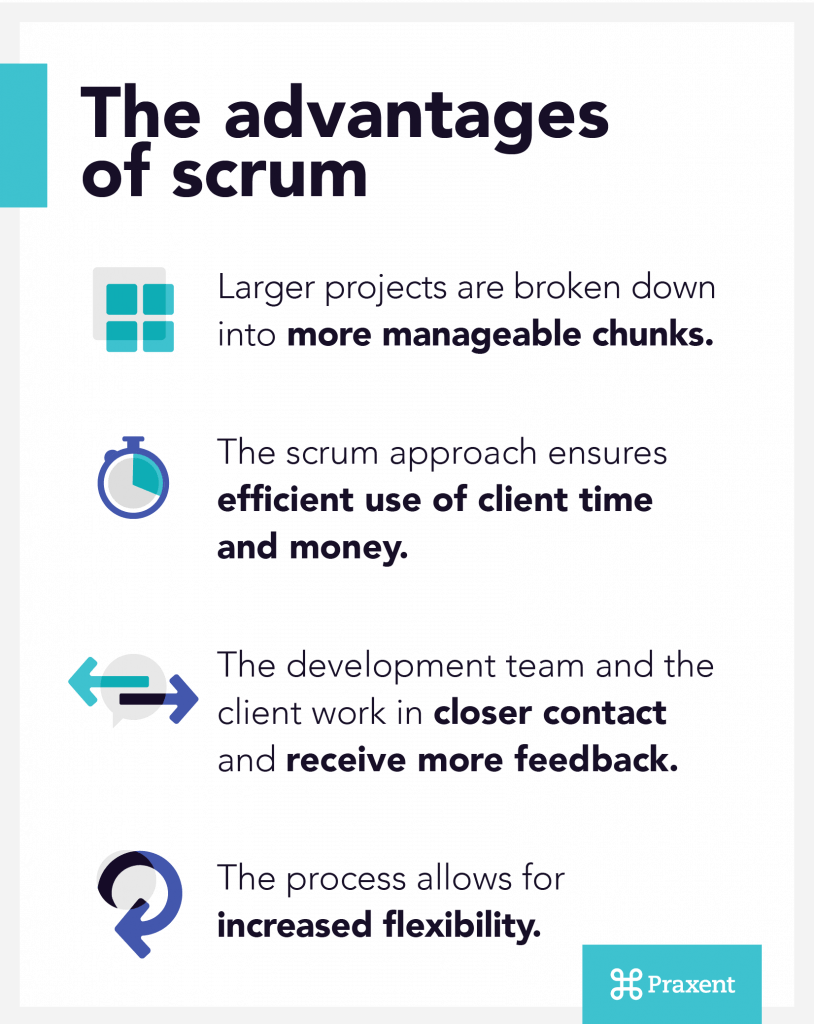
7 min read
5 Videos to Help You Become an Agile Scrum Expert
5 Videos to Help You Become an Agile Scrum Expert
For many developers, Waterfall feels automatic. It’s been drilled into you as the instinctive methodology for programming.
However, Agile scrum offers a flexible alternative as a framework within the software development lifecycle.
At the highest level, Agile scrum dictates a product owner break down their project “wish list” to start. The development/project management team then prioritizes the work into smaller chunks, or “sprints,” which are coordinated to a project timeline.
The advantages of Agile scrum over a top-down Waterfall approach are considerable.
By breaking down larger projects into more manageable and realistic chunks, Agile scrum…
- Allows for greater insight into future potential roadblocks.
- Ensures efficient use of client time and money.
- Keeps the client and development team in close contact, ensuring more regular feedback.
- Increases flexibility in case of unforeseen issues or mid-project priority changes.
While Agile scrum has its roots in the software development process, its project lifecycle flow can benefit any industry.
If you’re interested in adopting an agile work environment, these five videos will help you to become an expert.

1. Scrum Methodology and Definition
An excellent overview to Agile scrum, this video is from Practical Psychology and reviews the book Scrum: The Art of Doing Twice the Work in Half the Time by Jeff Sutherland, a co-creator of the framework.
The video offers an excellent summarization of the key ideas behind Agile scrum and looks at how the framework helps to avoid planning fallacy, especially the tendency to be overly optimistic or pessimistic about the parameters of a large project.
It looks at utilizing development teams of 3-9 people on a project, and continuously rotating them to avoid pitfalls with the “sunk cost fallacy.”
An example of the sunk cost fallacy is when developers become overly attached to a product feature, usually due to the amount of time spent on it.
The video also discusses how to use burndown charts to mark progress throughout each sprint and to give a visual representation of the remainder of work to be done.
In this, the presenter talks about the 80-20 rule, which is the idea that projects should prioritize work on the 20 percent of the features that provide the most value.
2. Intro to Scrum in Under 10 Minutes
From Hamid Shojaee, a former Microsoft, IBM, and Honeywell software developer, this video offers a breakdown of various elements of scrum.
He starts small, defining software features and user stories, and how they form a product backlog. He then moves onto prioritization, when the development team and client begin planning and look at what user stories should go into a particular version.
The video does an excellent job of defining the people involved in this process, and breaks down their traditional roles.
The video looks at development from start to finish under the scrum framework, how project time is estimated, and what’s involved in organizing and completing sprints.
Shojaee also discusses popular time management tools, such as the burndown chart, and how they can help to monitor a project efficiency.
3. Jeff Sutherland Breaks Down Scrum
Straight from the horse’s mouth, this video is a breakdown of the scrum process given by co-creator Jeff Sutherland.
In it, Sutherland begins by discussing the common problems and pressures developers faced and how they set about streamlining the process before implementing Agile scrum.
With waterfall, he states that the pressure from decision makers made developers consistently late in delivering a product.
Sutherland then discusses how exactly they came to develop the Agile scrum framework.
They looked at reducing the number of roles in a project team and eliminating the specialized silos that were slowing down the communication. They looked at how some of the best product management teams were motivated and created the role of the scrum master, a role similar to a project manager.
By the end, the number of meetings was reduced to a minimum: the beginning of the sprint, the daily meetings of 15 minutes or under, and the end of the sprint.
This video provides an excellent overview of the reasoning behind Agile scrum and how the changes made from waterfall provide added flexibility.
4. Agile Scrum| Business English Vocabulary
This video provides an overview of Agile project management as a whole, and how scrum fits into the process.
It takes a fairly simplistic look at the terminology, but explains an Agile scrum working environment in a way that is easy to understand.
The video goes through agile, scrum, sprints, backlogs and other key terminology associated with the framework.
5. Learn Scrum in 7 Minutes
This video from TechExcel offers an overview of the various components of Agile scrum.
The term scrum comes from rugby, in which the ball is placed in the center of two opposing teams huddled in a single unit.
The primary goal is to gain possession of the ball and pass it outside of the scrum, allowing for another team member to run it down the field and score.
Borrowing this term, software development uses the term to represent a cohesive unit moving in a single direction, supporting each other to accomplish a common goal.
Scrum offers developers the opportunity to focus on creating the highest quality product in the shortest amount of time and allows for a greater amount of flexibility in a more adaptive environment.
This video offers a glimpse into the advantages of working in this more flexible framework.
Conclusion
All of these videos offer greater insight into what it’s like to work in a more flexible, adaptive Agile scrum environment.
For someone new to development or project management, the framework can take some getting used to.
It can also bring a significant amount of change for someone experienced in a waterfall project management environment.
Agile scrum offers project teams the ability to provide clients with a higher quality product in a shorter amount of time. The advantages this brings to a developer and client can’t afford to be overlooked.


Leave a Reply